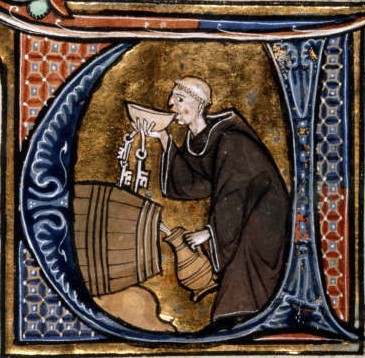
We continue with our journey to discover the ancient techniques of gilding miniatures on parchment manuscripts with the help of honey…
The plaster compound for gilding the illuminated codices consisted of a binding substance, which could be egg white or gum arabic, mixed with honey, and which gave the gilded part a three-dimensional, chiseled effect.
In addition to enhancing the adhesive capacity of the compound by increasing its flexibility, honey served to prevent fractures in the gilded surface. Due to its sugar content, it also acted as a degreaser, thus removing moisture.
The ready plaster was then spread on the page, with the help of a quill or miniature brush. With quick and delicate gestures it was spread from the center toward the corners, following the contours of each element of the sketch.
A very thin sheet of gold was then taken and placed on the pillow for gilding. On the latter the gold could be flattened with a blow or cut with a small knife into small strips and into the various desired shapes.
It was then followed by the application of the gold leaflets to the page. The miniaturist had to maintain the right humidity of the paper and plaster, breathing deeply on the page so that there was a perfect adhesion. Immediately the newly applied gilding was covered with silk, holding it pressed down with the thumb.
Thus began the gold-polishing phase, carried out with a special tool consisting of a dog’s (or possibly cat, wolf, lion’s) tooth mounted on a handle. By polishing, superfluous gold would peel off and fall off, and these small particles could be recovered or simply removed with a brush.
Even today, honey is still used in the artisan world, especially in the restoration of ancient manuscripts: the original compounds are reconstituted, which over time managed to preserve the extraordinary beauty of the miniatures.
But also in painting: well-known are honey watercolors, artisanal products made by mixing pure pigments in a solution of acacia honey and gum arabic. Honey in this case increases the solubility of the colors and enriches their brilliance.


